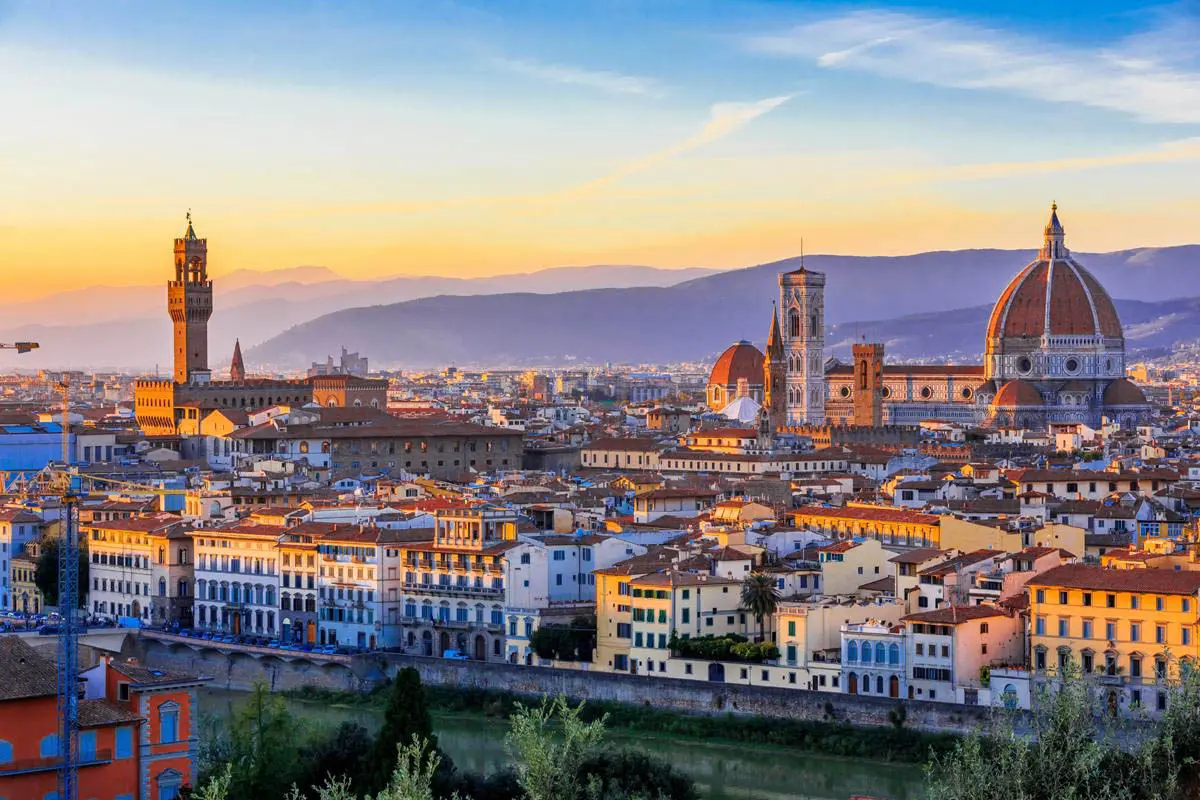
INTRODUCTION
Welcome to Florence, the capital of Tuscany and a city whose historic center is a stunning open-air museum, that you will discover with our audioguide (audioguides).
Originally, Florence was an Etruscan fortified camp. In 395 AD, the Etruscans fell to Rome, and the Romans founded the municipality of Florentia. In 774, it was conquered again, this time by the empire of Charlemagne.
After its liberation in the Middle Ages, the city participated vigorously in the power struggle between the different towns of Tuscany (Siena, Pisa ...), and later in the wars for and against the Pontiff and the nobility. It became one of the most powerful and prosperous cities in Europe, coining its own currency for three centuries, which was known as the golden florin.
The Florentines were pioneers of the "large-scale loan,” which began by lending sizable sums to Europe’s sovereign states in exchange for a portion of their tax revenue each year.
In 1406, Florence conquered Pisa and became a significant maritime power. The prosperity of the city prompted its wealthiest merchants to transform their homes into elegant palaces.
The Medici, who were the richest family in Florence, seized power in 1434, banishing and bankrupting their adversaries. Consequently, they ruled the city for 350 years. During this period, Florence was known for its prosperity and as the epicenter of art and culture under the patronage of the Medici.
In 1737, the Medici lineage came to an end. The city was passed to the Austrian crown until 1815 when Tuscany became a province of Italy after the Congress of Vienna.
It was the capital of Italy for six years until 1871.
During World War II, the city was occupied by the Germans which saw many of its bridges destroyed. Thankfully, the Old Bridge (Ponte Vecchio) could be saved.
The Arno River flooded in 1966, inundating a large part of the city. A terrifying surge of water and mud killed 34 residents and caused incalculable damage to the city and its heritage. An army of volunteers from all over the world came to help the Florentines. As a show of gratitude, the city still remembers them as the “Angels of the Mud.”
PIAZZA DEL DUOMO
Florence’s most important square is the Piazza del Duomo, which is considered the religious center of the city. From here you can see with the audioguide (audioguides) the Cathedral, the Baptistery of Saint John, and the Giotto Bell Tower.
Numerous homes were demolished to make room for the huge cathedral and bell tower. For some time, a local family known as Bischero refused to sell their home until a fire eventually destroyed it. A commonly used Florentine insult came from this event: "O Bischero!"
Near the Plaza del Duomo was the Loggia del Bigallo, a small house that belonged to the Santa María della Misericordia Company, where abandoned and orphaned children were gathered.
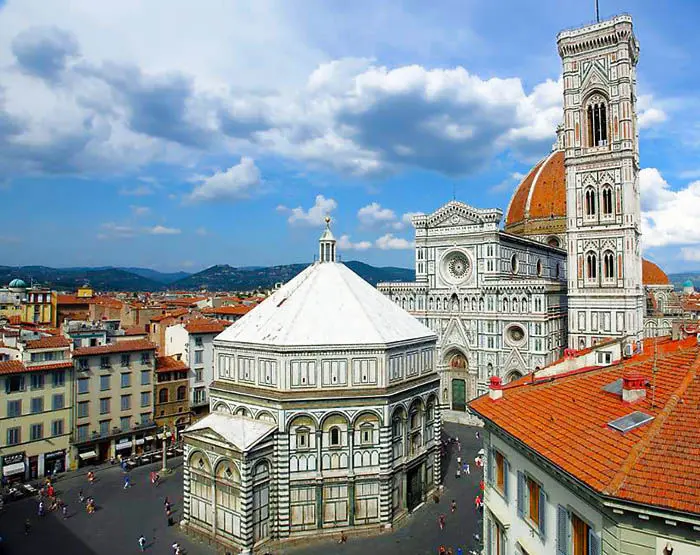
CATHEDRAL OF SANTA MARÍA DEL FIORE
The audioguide (audioguides) follows in the Cathedral of Santa María del Fiore, which construction began in 1296. Upon its completion 72 years later, it was the largest building in Europe. The black plague that laid waste to the city occurred during its construction.
Its name comes from the lily flower, which is a symbol of Florence and part of its flag.
Crowning the edifice is a great dome, which was built almost a century later by Filippo Brunelleschi. Its design was inspired by the Pantheon of Rome.
Due to the excessive weight of the Dome, Brunelleschi studied for years to invent a new and ingenious masonry method which was based on using a composition of crossing bricks. The result was a double self-supporting dome, measuring 114 meters high and containing 463 steps. The last flight of stairs at the top of the dome is almost vertical between the interior and exterior cupola. The highlight of its decoration is a fresco of the Last Judgment.
Brunelleschi passed away 10 years after he completed the dome. His funeral was held underneath the dome, and he was buried in the crypt of the cathedral.
After a series of excavations were conducted, in 1965 the remains of the original cathedral of Florence was discovered which date back from when the city was a Roman colony. The Santa Reparata is within its foundations.
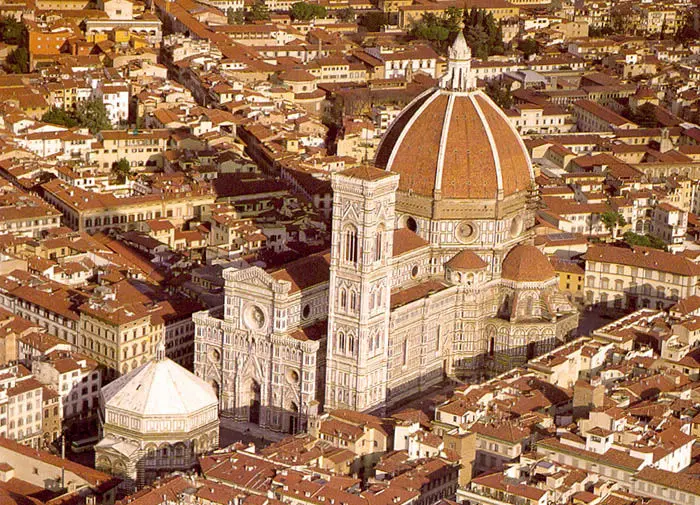
THE BAPTISTERY OF SAINT JOHN
This baptistery is considered the oldest building in Florence, with construction beginning in the 5th century. Its octagonal shape symbolizes the Resurrection of Jesus Christ, and its façade is adorned with white and green marble, keeping in line with the other buildings in the square.
Within its interior, highlights include the tomb of the antipope Juan XXIII and a beautiful dome decorated with a Byzantine mosaic.
Of its three bronze gates, the most impressive are the “Gates of Paradise,” as Michelangelo named them. These are located on the Battistero side and overlook the Florence Cathedral. The gates consist of 10 panels which portray scenes from the Old Testament such as the story of Adam and Eve and the flood of Noah.
Varnish was applied in the 18th century that concealed the original color of the panels. Over the years, however, restorations have been carried out to restore their original shape and color.
Various events throughout the city’s history put the resistance of the Paradise Gates’ to the test. An example includes during the Second World War when it was dismantled to protect it from bombing runs. Later, flooding of the Arno River caused 6 of its panels to fall off.
The original panels are currently being held in the Cathedral Museum for safekeeping. In their place is an exact replica which you can see with the audioguide (audioguides).
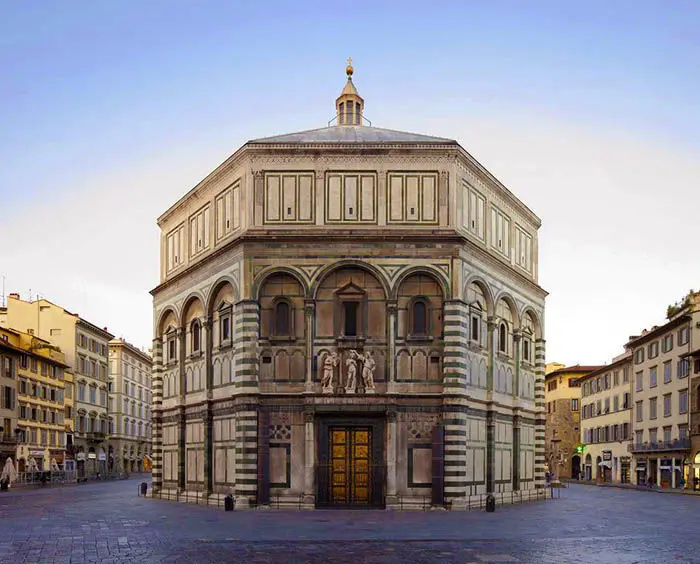
GIOTTO’S BELL TOWER
The famous artist Giotto began this construction in 1334. However, his premature death meant other artists were put in charge of finishing it.
The bell tower is separated from the cathedral itself so that the vibrations of the chimes do not damage the structure.
It is 84 meters high and is comprised of three different levels. The exterior decoration consists of white and green marble, while its reliefs portray biblical moments as well as everyday activities around town.
The statues conserved in the belfry are copies. The originals can be seen with the audioguide (audioguides) in the Museo dell'Opera del Duomo.
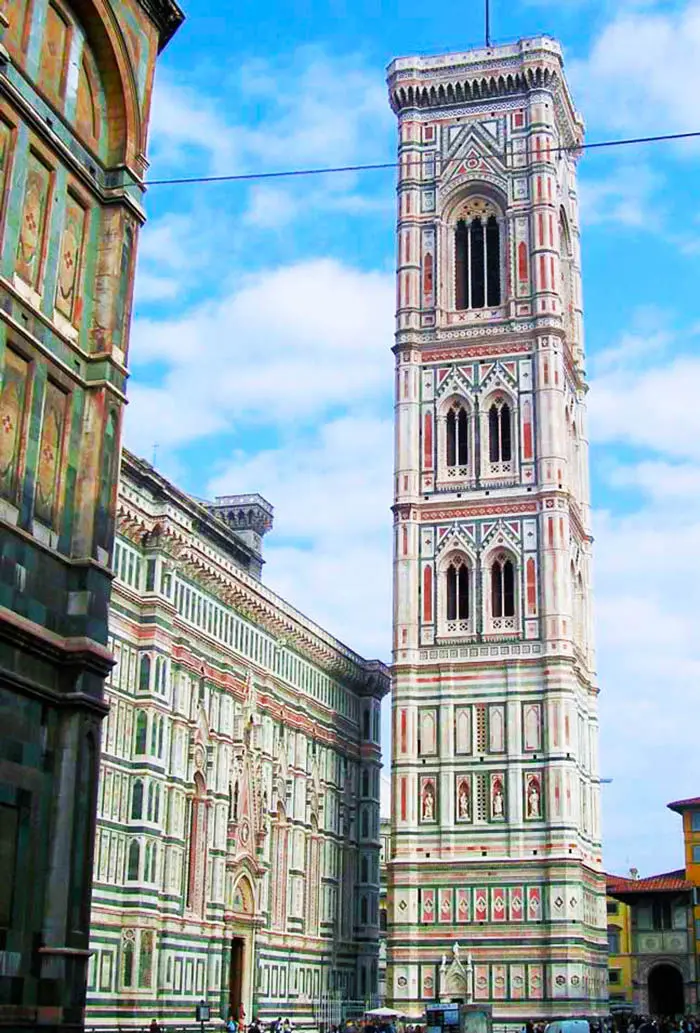
UFFIZI GALLERY
The Uffizi Gallery is one of the most recognized art collections in the world, with works by prominent Italian Renaissance artists such as Botticelli, Leonardo da Vinci, Michelangelo, Raphael, and Titian, that you can discover with the audioguide (audioguides).
Initially, the building was to house the offices of the Florentine magistrates, which is where the name comes from, considering Uffizi means offices. However, in 1581 the Medici family decided to use part of this building to store their art collection.
In 1993, a nearby car bomb, which mostly affected the Niobe Room on the second floor, meant part of the gallery had to be rebuilt.
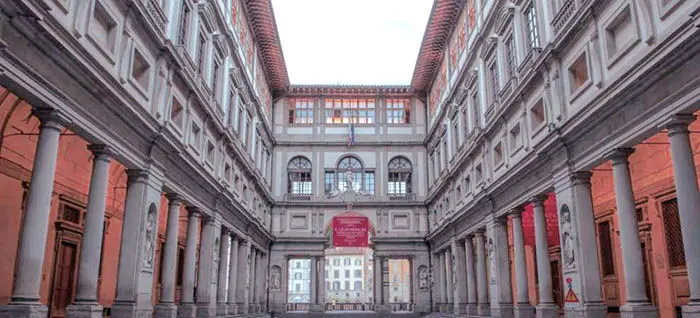
PIAZZA DE LA SIGNORA
This square is encircled by the Palazzo Vecchio, the Loggia dei Lanzi, the Fountain of Neptune, the Equestrian Statue of Cosimo I, and the Uguccioni Palace.
The plaza in which you stand with the audioguide (audioguides) is steeped in history. During the Roman Empire, there were hot springs here, which disappeared in the Middle Ages. Since then, it has been occupied by craftsmen and government buildings.
Numerous executions were carried out here, the most commemorated of which was that of Girolamo Savonarola. The feast of the Fiorita is celebrated every May 23 in his name, in which a tapestry of flowers is placed in the spot he was hung. A marble plaque can be found in the exact location today.
The plaza was covered with flowers the day after his death, symbolizing the appreciation the people had for this beloved Dominican religious figure.
The square adopted its current L shape after the battle of Benevento in 1268.
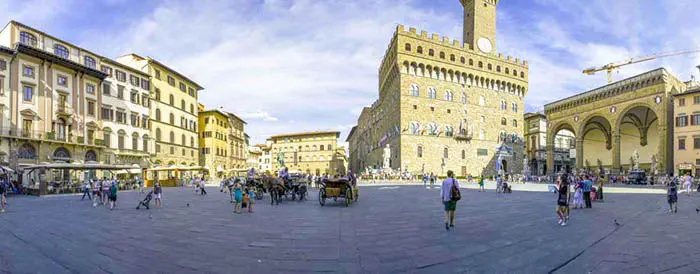
PALACIO VECCHIO
Built in 1314, these were originally the agencies of the Florentine government of the republic. Back then, it was known as the Palazzo della Signora.
In the 16th century, Cosimo I de Medici ordered it to be remodeled which led to its current appearance. The court used it as a residence until it was decided to be moved to the Pitti Palace, thus earning it the moniker of the “old palace.” The Medici family ordered the construction of numerous passages so they could escape from danger and hide their valuables.
At its entrance is a copy of Michelangelo’s David as well as the famous Hercules and Cacus statues.
Steping inside with the audioguide (audioguides), we can find the Cinquecento Hall, the largest in Florence, and a place where audiences and events are still held. It was formerly used as a meeting place for the 500-member Grand Council. Michelangelo and Leonardo Da Vinci were planning to paint a few frescoes in the room. In the end, however, Vasari was responsible for portraying the life of Cosme I through his art.
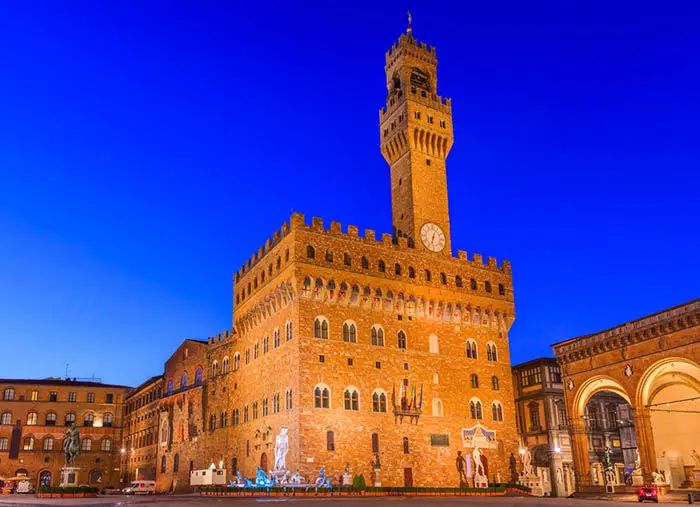
LOGGIA DEI LANZI
Built in 1381, this porch was originally an open balcony where assemblies and ceremonies were held. The structure was named after the mercenaries who camped here on their way to Rome in the year 1527.
In the 16th century, the Medici family put a few sculptures from their collection in the portico, thus the balcony no longer served its original use.
The two most important statues that you can see here with the audioguide (audioguides) are the Rapture of the Sabinas of Giambologna and the Perseus of Benvenuto Cellini.
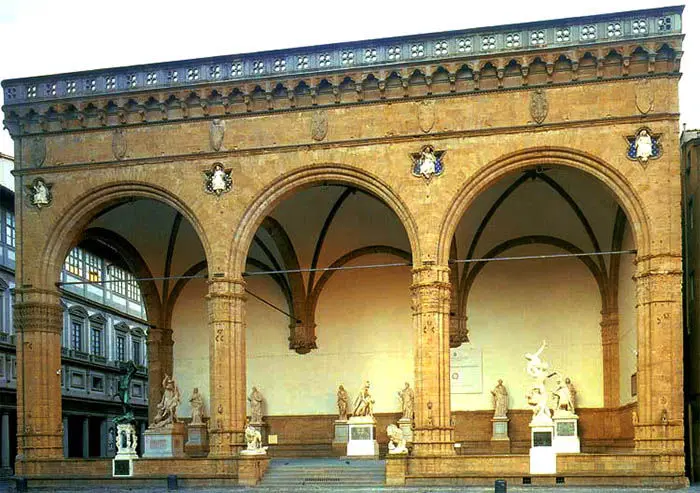
PONTE VECCHIO
Construction began in 1345, making it the oldest stone bridge in Europe. Initially, the Romans built it out of wood, although it was later destroyed by floods.
The houses along the bridge were originally those of butchers and fishmongers. However, when the court moved into the nearby Palazzo Pitti, Fernando I ordered the closure of these buildings due to the bad smell they omitted. A jewelry and trinket market was opened in their place.
The word "bankruptcy" was coined on this bridge. When a merchant could not pay his debts, the table where he exhibited his product was destroyed, and the people would say “banco-rotto,” which means “Broken Bench.”
During the Second World War, this was the only Florentine bridge the Germans did not destroy.
The bridge is home to a romantic tradition. Couples who wish to consecrate their eternal love will attach a padlock and throw the key into the Arno River. However, doing so is prohibited and results in a fine because the bridge began to suffer structural damage due to the large number of locks being attached. Nevertheless, the tradition still continues today.
Let's go to the Palacio Pitti to follow the visit of Florence with the audioguide (audioguides).
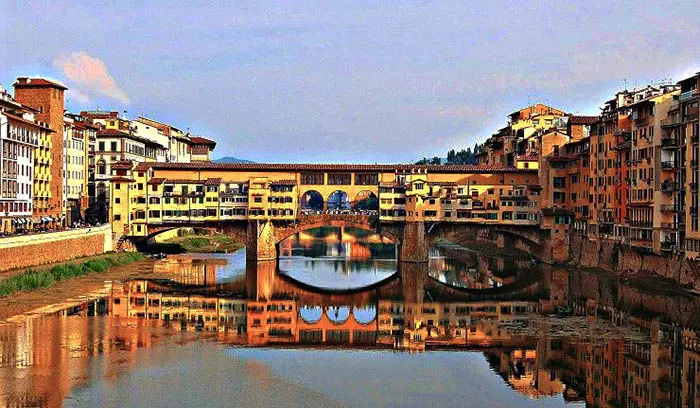
PALACIO PITTI
Built in 1458, this was the residence of Florentine banker Lucca Pitti. Filippo Brunelleschi designed this palace for the Medici family. However, because it was so ostentatious, the Pitti family decided to keep it. In 1565, it became the new Medici home thanks to Leonor de Toledo, the wife of Cosimo I de Medici, who ordered it to be extended. Later, Cosimo I commissioned the construction of the Vasari Corridor to join it with his old palace and with his administrative offices.
In the 19th century, it served as the military base of Napoleon I and was the home of the Kings of Italy.
Later, the palace was donated to the Italian people and become an art gallery featuring works of the 19th and 20th century.
You can walk into the gardens and listen to the next audio of the audioguide (audioguides).
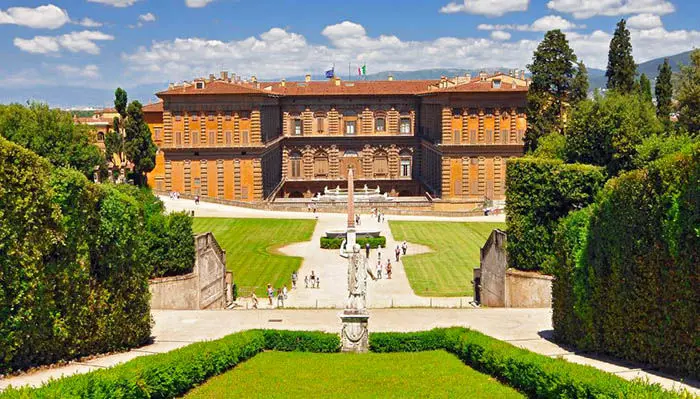
THE BOBOLI GARDENS
When the Medici moved their residence to the Pitti Palace, they decided to extend their garden to what you can see today.
The Boboli gardens have several different access points: the Pitti Palace courtyard, the Belvedere Fortress, the Romana Gate, and the Porta Romana Square.
Walking in the gardens with the audioguide (audioguides) will allow us to discover statues of various styles and periods as well as elaborate fountains, such as the Fountain of Jupiter, the Fountain of Neptune, and the Fountain of Bacchus. The garden is also home to grottos including the Grotta Grande and the Grotto di Buontalenti, both of which are decorated with frescoes and sculptures.
The Viottolone Avenue crosses the garden towards the Isolotto, a small island which contains a replica of the Fountain of the Ocean.
The garden amphitheater was originally a quarry from which stones were extracted to construct the palace. Nowadays, the Egyptian obelisk of Pharaoh Ramses II is located here.
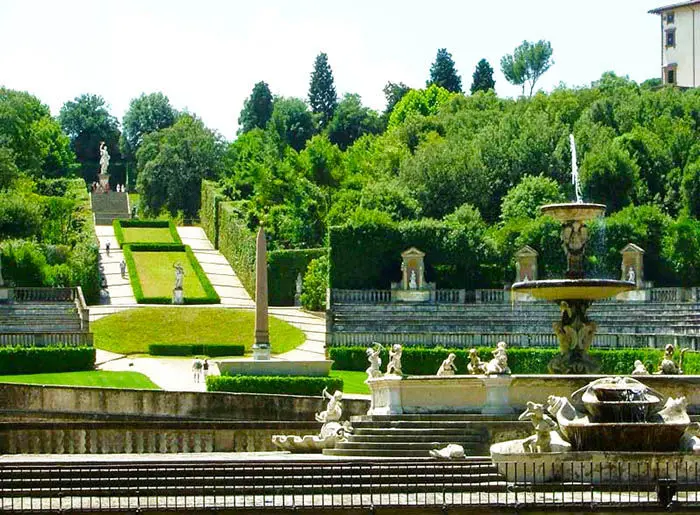
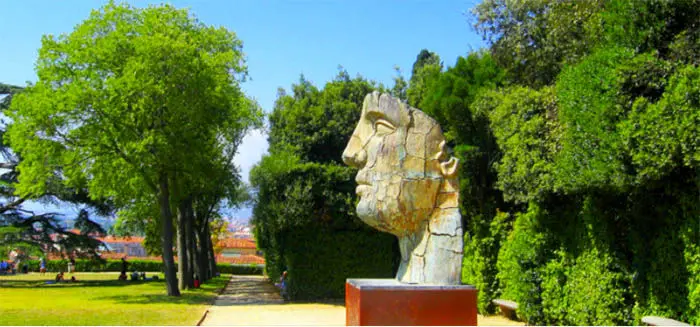
ACADEMY OF FLORENCE ART GALLERY
The gallery was commissioned by Duke Pietro Leopoldo in 1784 to host the works of the artists of the Academy of Fine Arts, which is located right next door.
Here we can find David by Michelangelo. However, this was not its original location as the world famous statue was displayed in the Piazza de la Signora for almost 400 years. An act of vandalism in 1873 prompted it to be moved here.
The magnificent marble sculpture, which is 5 meters high and weighs 5 tons, was crafted between 1501 and 1504.
Inside, with the audioguide (audioguides), we can find works by Michelangelo, Sandro Botticelli, Domenico Ghirlandaio, Pontormo, and Andrea del Sarto, among others.
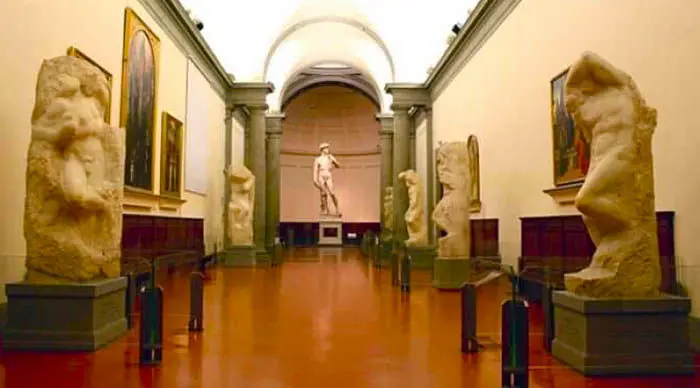
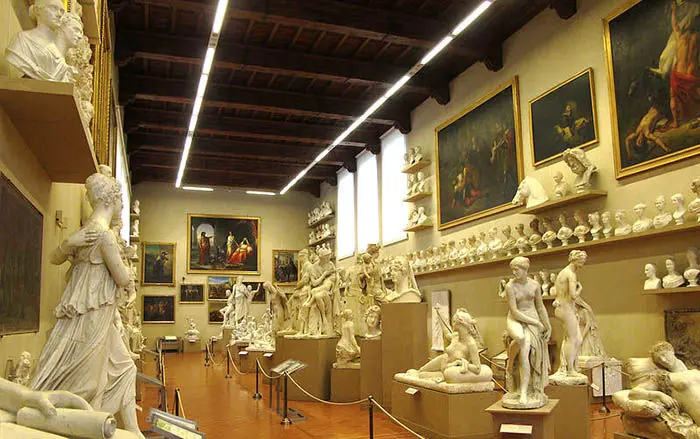
BASÍLICA DI SAN LORENZO
The audioguide (audioguides) leads us now to the Basilica di San Lorenzo. Built in 393, this was the main city cathedral for 300 years. In 1419, Filippo Brunelleschi extended the building, although the facade is still unfinished.
The basilica is the burial place of much of the Medici family, housing 50 tombs of different members of the dynasty which are distributed between the Old Sacristy, the Chapel of the Princes, and the New Sacristy. The latter was made by Michelangelo but remains incomplete due to the siege of Florence and the artist’s escape in 1534.
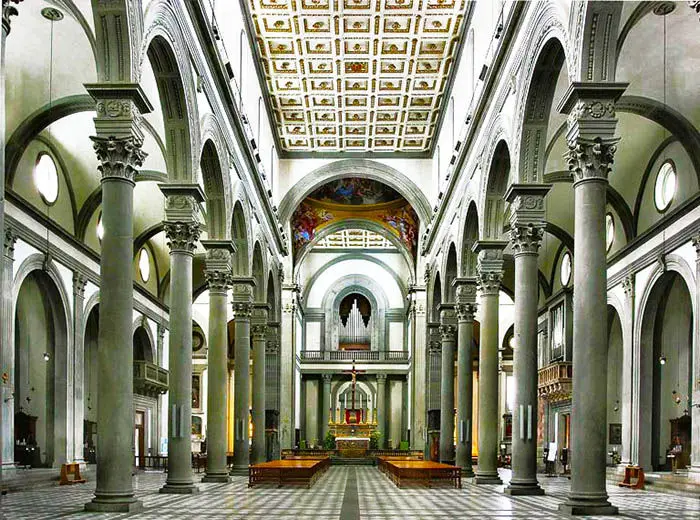
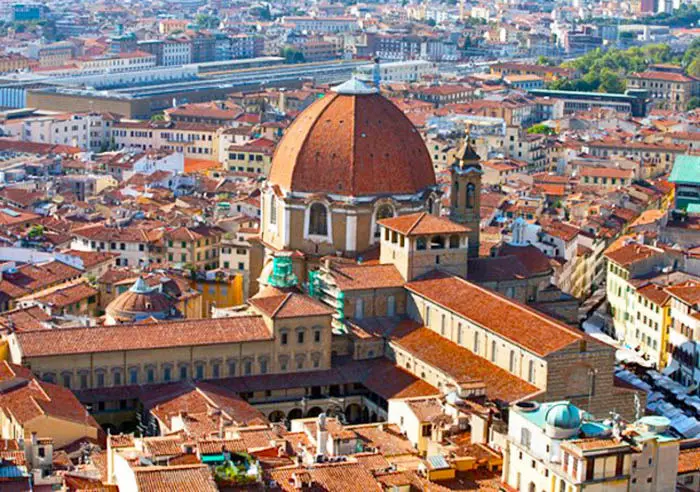
SANTA MARIA NOVELLA
This is the main Dominican headquarters in Florence. Construction began in 1279 and was completed in the mid-14th century.
The 69-meter bell tower was originally used as a lookout to spot fires.
Inside, we find with the audioguide (audioguides) the Green Cloister, which is decorated with frescoes that reflect the "Triumph of the Dominican Order."
Since their early beginnings, Dominican monks have created perfumes and herb-based home remedies. By the 16th century, they had become so successful that Catalina de Médici created her own fragrance, "Acqua della Regina."
Nowadays, the Officina Profumo-Farmaceutica di Santa Maria Novella continues to manufacture their renowned fragrances, with retail branches in New York, Los Angeles, and Tokyo.
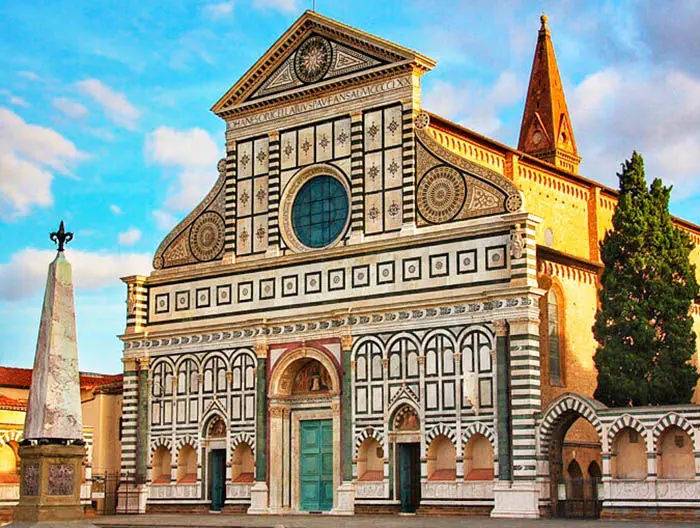
PIAZZA DELLA REPUBLICA
Since the Middle Ages, this plaza has been the commercial center of the city and a bustling locale complete with numerous street vendors. When the capital of Italy moved to Florence in 1865, sanitation works were carried out in the old town to resolve ongoing hygiene issues. As a result, the New Market was inaugurated in 1874.
Inside the square is the Column of Abundance, which symbolizes the center of the ancient Roman city where the main streets of Cardo and Decumano once intersected.
Also, we can see with the audioguide (audioguides) the Arch of Triumph and the Equestrian Statue of King Vittorio Emmanuele II, of whom the plaza was named after until 1947. This statue was moved during the interwar period.
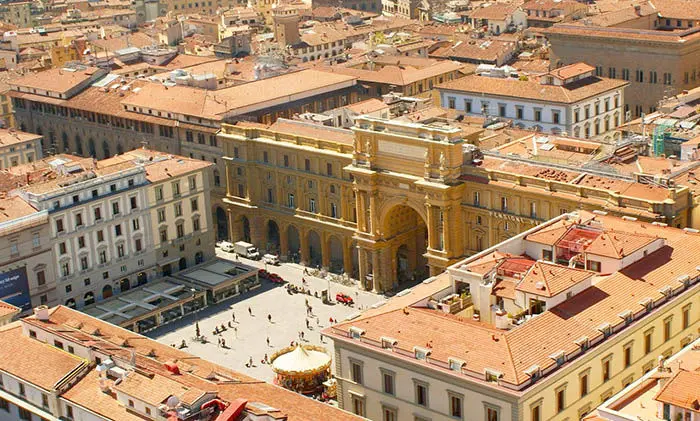
MUSEO CASA DI DANTE
This museum is dedicated to Divine Comedy writer Dante Alighieri.
Inside, the artist's work is exhibited alongside details of his life and some facts of the time.
In 1900, the Florence City Council decided to build a house-museum on the site where the poet was believed to have been born.
Not far from his house-museum you can go with the audioguide (audioguides) to the Santa Margherita Dei Cerchi Church. Here, Dante, aged 9, saw for the first time his beloved Beatrice who, as you may be aware, was his great inspiration to write the Divine Comedy.
It was a forbidden love that inspired his poems. After her death from the plague, they would become his most celebrated works.
Beatrice’s mortal remains rest in the church where they met for the first time. Next to her grave are a couple of baskets where lovers can leave their messages.
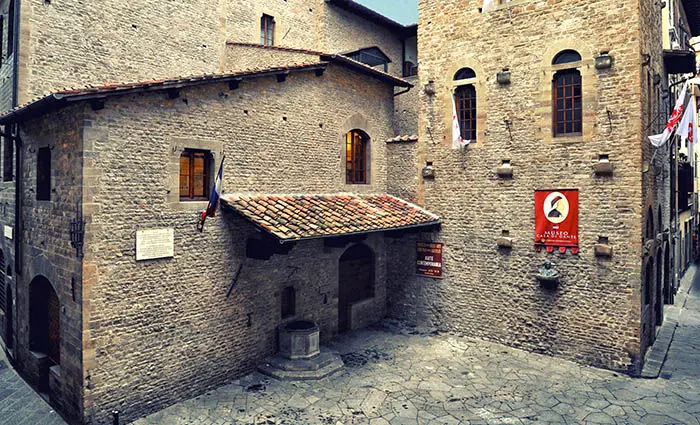
OPERA MUSEUM OF SAINT MARIA OF DUOMO
This museum is located just behind the Cathedral of Florence. Within it, we can see with the audioguide (audioguides) some of the original pieces of the Cathedral, the Baptistery, and the Bell Tower. In addition, you can see sketches and tools which were used in the construction of these buildings.
Brunelleschi, Donatello, and Michelangelo worked in this building to create their greatest artworks, such as David.
Three works are exhibited inside:
The Pieta Bandini by Michelangelo, a sculpture created with the intention of being buried in Rome.
María Magdalena by Donatello.
The Gates of Paradise, which is the main door of the Baptistery of Saint John. Ghiberti took 27 years to finish it.
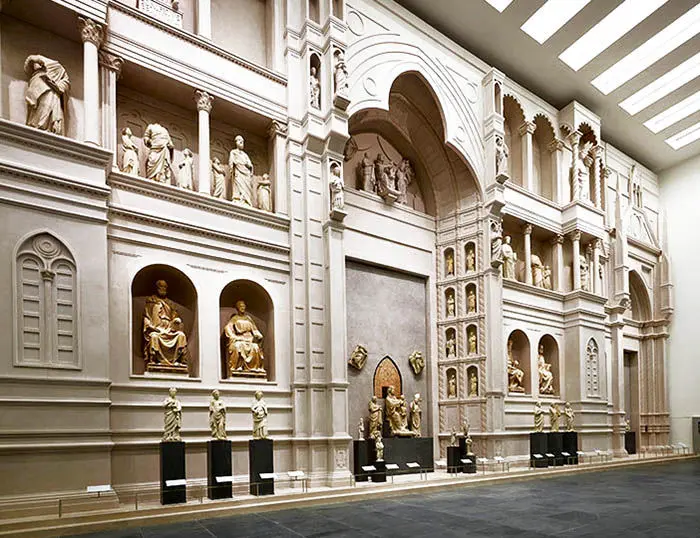
BASILICA DI SANTA CROCE
Next stop of the audioguide (audioguides), this is the largest Franciscan church in the world, stretching a whopping 115 meters high. Construction began on the site of a small chapel dedicated to San Francisco de Asís.
The Quarantesi family financed part of the church, and their family emblem was to be included on the façade.
However, the monks in charge refused this request. As a result, the family stopped financing the construction, and the façade wasn’t completed until the 19th century.
Brunelleschi, Donatello, and Giotto were some of the artists to work on the interior decoration.
Known as the Temple of the Glories of Italy, the pantheon holds the tombs of Michelangelo, Galileo Galilei, and Machiavelli.
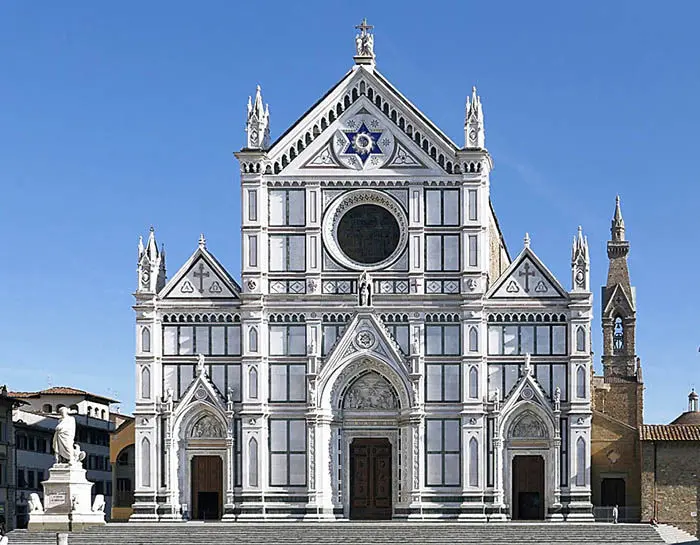
FONTANA DEL PORCELLINO
The statue you are looking at with the audioguide (audioguides) is a bronze copy. The original marble artwork is held in the Uffizi Gallery.
In the 17th century, it was located in front of the boar pharmacy, which was a meeting place for intellectuals.
Florentine tradition says that to earn a financial fortune, you must put a coin in the mouth of the boar and caress its snout.
Several copies of this animal statue are known to be distributed throughout the world, in America, France, and even in Australia.
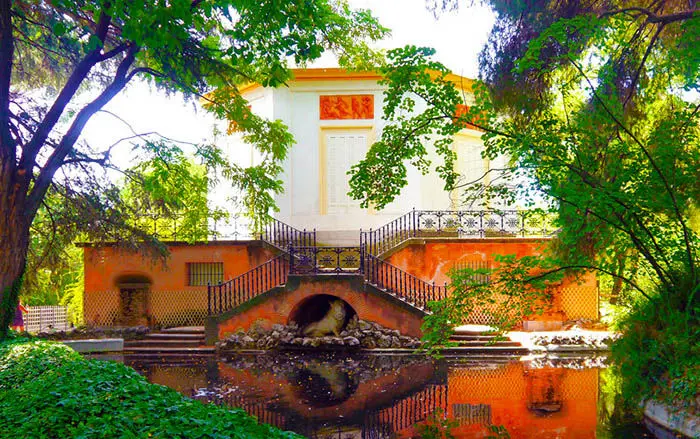
LOGGIA DEL MERCATO NUEVO O DEL PORCELLINO
This portico was built in the mid-16th century to house the market. Originally silk and jewelry were sold here, although nowadays leather goods and local souvenirs are on sale.
If you step inside with the audioguide (audioguides), you will find the Scandal Stone near the center of the Loggia. Here, merchants with outstanding debts were exposed and humiliated. They had their pants pulled down and were hit repeatedly across the buttocks with the stone.
Here, the troops would gather before battle to the ring of the massive mobile Martinella bell wagon while waving the city the flag. The ancient Florentines considered it dishonorable to attack an enemy by surprise. Therefore, they would warn them up to a month in advance by continuously ringing the famous Martinella bell.
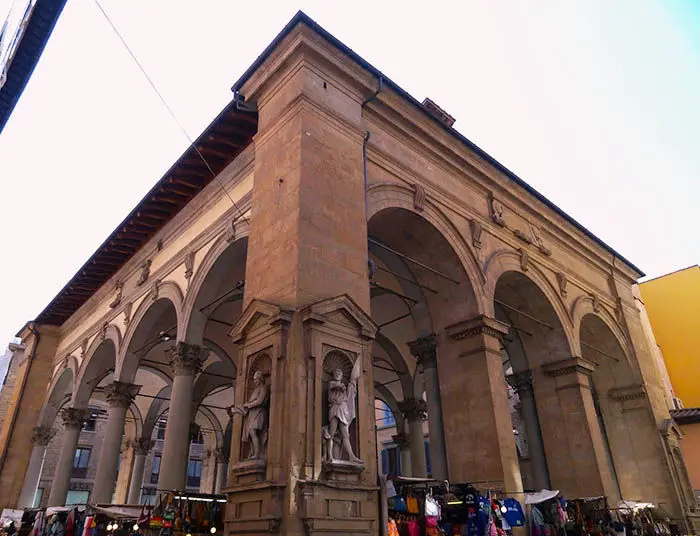
PIAZZALE MICHELANGELO
Located on the Monte alle Croci hill, this lookout was built in 1865 as part of the urban renewal of the city when it became the capital of Italy. In honor of the famous artist, the square boasts a bronze replica of David and the four statues of the chapel of the Medici of San Lorenzo.
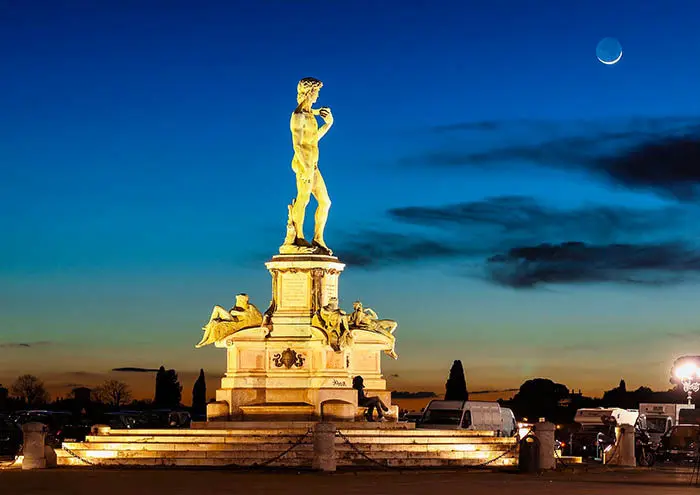
SAN MINIATO DEL MONTE
Legend has it that in the year 250, during the mandate of Emperor Decius and when the Romans were persecuting the Christians, a hermit named Miniato arrived in Florence and settled in the Monte de las Cruces. The Romans caught and decapitated him. Later, he is said to have taken his own head and carried it to the mountain where he was buried.
It was here that the basilica was built between 1018 and 1207, making Miniato the first martyr of the city.
The bones of San Miniato are kept in the main altar of the crypt that you can see with the audioguide (audioguides).
On the facade, we can see an eagle holding a wool bundle. This was a symbol of the Art of Calimala, an association of Florentine wool merchants who financed part of the basilica.
In the siege of Florence by the troops of Charles V, it is said that Michelangelo protected the tower by covering it with mattresses.
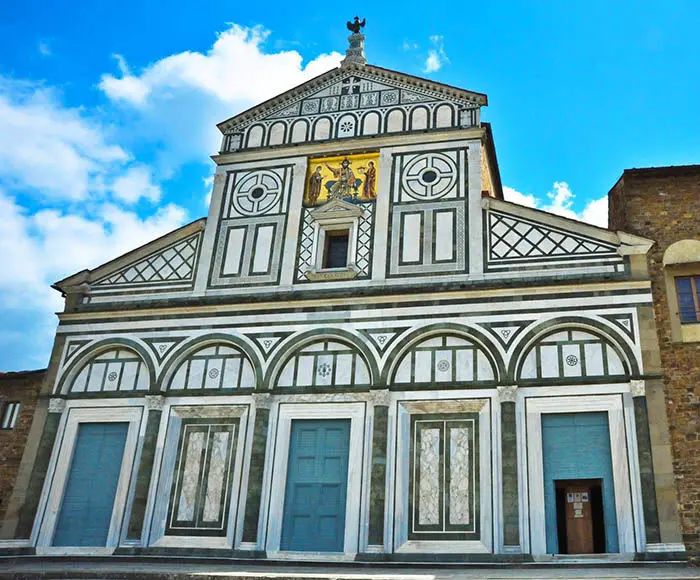
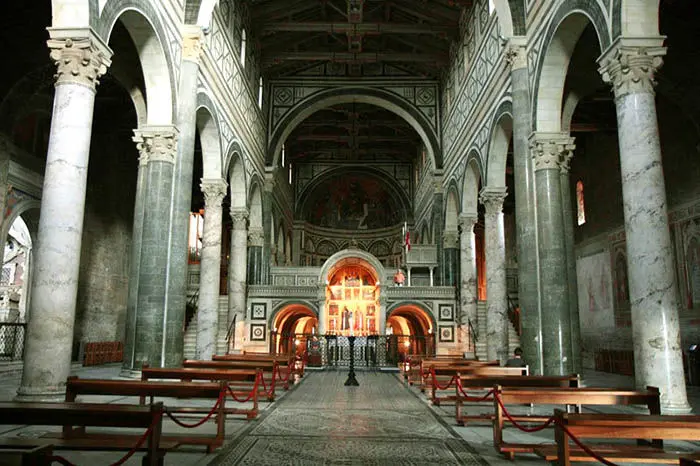
FORTE DI BELVEDERE
By order of the Medici family, Bernardo Buontalenti began construction of this fort at the end of the 16th century. It is also known as the Fort of San Jorge.
The fort is connected to the Palazzo Vecchio by the Vasari Corridor and with the Pitti Palace through underground passages that run below the Boboli Gardens.
In its interior is the Belvedere Palace, which was built in 1570. It is said that the Medici stored luxurious possessions within its walls which they guarded with deadly booby traps. Today, you can visit with the audioguide (audioguides) the building which is the Florentine Civic Museum.
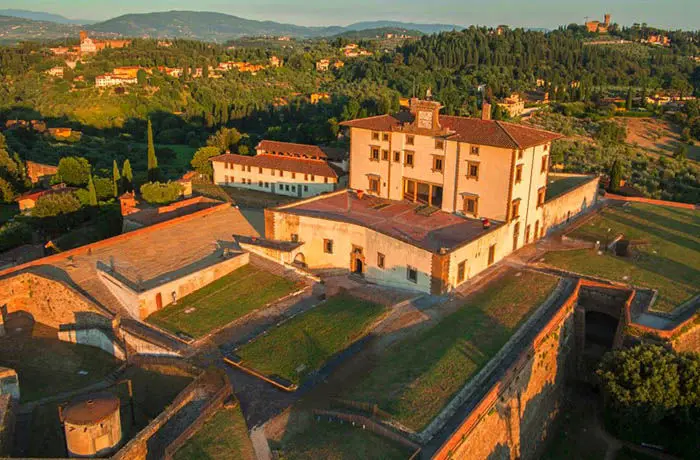
BASILICA DI SANTO SPIRITO
Brunelleschi was commissioned to design this church in 1444 on top of the ruins of the old Augustinian convent which burned down in 1341. After the artist passed away, his followers were put in charge of finishing the construction.
However, the facade remains incomplete due to its overly complicated decorative design.
Michelangelo was welcomed into this convent when he was 17 years old. It was here he would learn anatomy from the corpses of the monks' hospital. To show his appreciation, he designed the wooden crucifix of the main altar of the church.
The basilica in which you stand with the audioguide (audioguides) is located in an area known as Oltrarno, the scene of a famous local love story not unlike that of Romeo and Juliet. The classic tale is also about two warring families, this time called the Bardi and the Buentolante, and two youngsters from each side who are madly enamored.
Protagonists Dianora and Ippolito fall in love at first sight and decide to get married in secret. But in one of his secret encounters, the young man is arrested and sentenced to death. On the day of the execution, Dianora expresses her love for Ippolito in the hopes that his sentence will be pardoned.
Unlike Shakespeare’s famous tragedy, these two Florentine lovers enjoyed a happy ending. In the end, the two families accepted their relationship and validated their marriage.
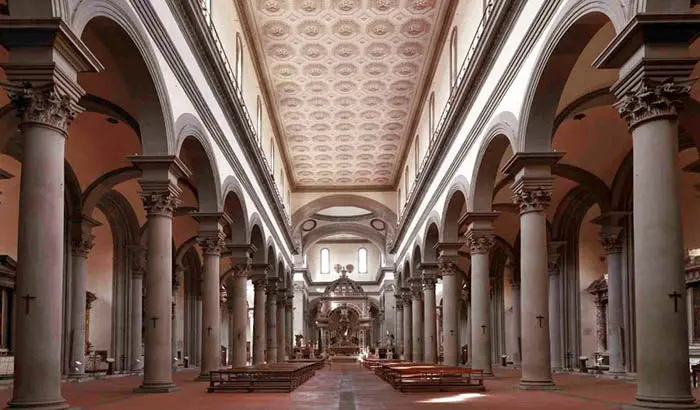
PONTE ALLE GRAZIE
Built in 1227, the appearance of this bridge was very similar to that of Ponte Vecchio, complete with wooden houses and a chapel called Santa María della Grazie.
In 1876, some buildings had to be destroyed to make way for the construction of a tram. Later, in 1944 the Nazis destroyed the entire bridge to prevent the Allies from advancing.
After a competitive tendering process, the bridge was rebuilt in 1953, although in a much more modern style which you can appreciate with the audioguide (audioguides).
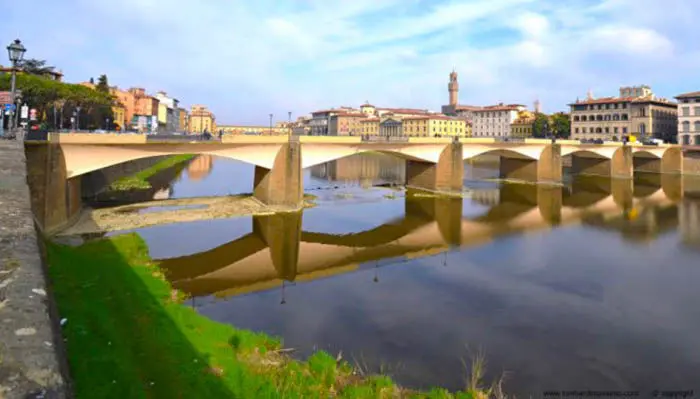
GALILEO MUSEUM
Next stop of this audioguide (audioguides), the Galileo museum was inaugurated in the Catellani Palace in 1930. Within it is a collection of scientific objects from the Medici and Lorraine dynasties from the 16th to the 20th century.
Highlights include the telescope and the objective lens that Galileo used to discover the mountains of the moon and the satellites of Jupiter.
The museum houses Galileo's middle finger, which was separated from his body when his remains were moved to his family crypt.
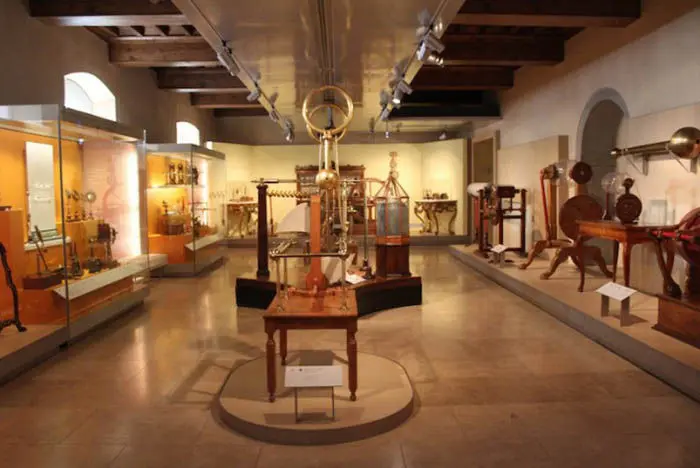
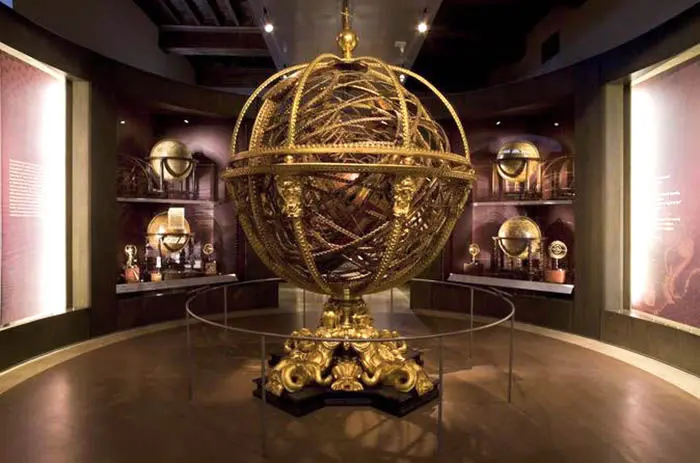
BARGELLO NATIONAL MUSEUM
This palace was built between 1255 and 1261. It served as the residence of officials such as the "Podestà," a mayor-magistrate who was a foreigner to guarantee objectivity, the "Capitano del Popolo," who was the relations guarantor between the old aristocracy and the new bourgeoisie, and the "Captain of Justice," who was known as the Bargello.
For about 300 years, the city jail lay within the palace. In 1786, the death penalty was abolished, and all instruments of torture were burned in its courtyard.
In the tower is a bell called Montanina, which was used to warn the city in the event of a war or siege.
In 1865, the Bargello became a national museum. It houses a collection of Italian sculptures from the 14th to the 16th centuries, most of which were donations from wealthy characters of the time. Works from artists such as Michelangelo, Donatello, Della Robbia, and Verrocchio can be find with the audioguide (audioguides).
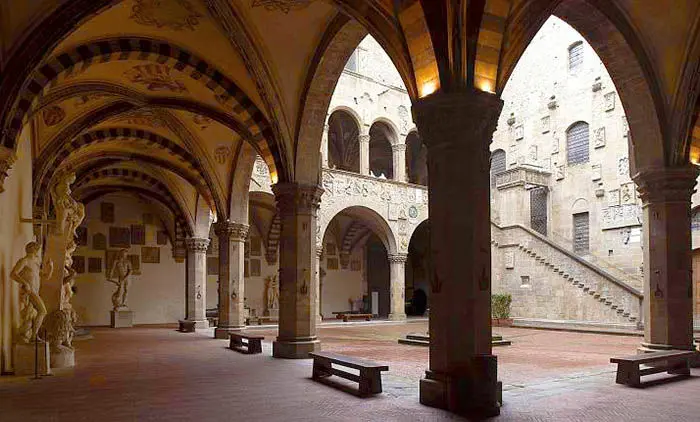
CHIESA DI SAN SALVATORE DI OGNISSANTI
The audioguide (audioguides) follows with one of the oldest churches in Florence, dating from the 13th century. Members of the Vespucci family were buried here. Among them was Américo, the Florentine explorer who the Americas were named after.
Another family member was Simonetta Vespucci, the wife of Marco Vespucci and the second cousin of Américo. This woman was the muse of the artist Botticelli who, like many other men in the city, fell instantly in love when he saw her for the first time. In 1475 she was considered the most beautiful woman in all of Florence.
When Simonetta was 23, she became sick with tuberculosis. Later, in 1470 she passed away from her illness, which caused Botticelli great heartbreak. He was obsessed with her beauty for the rest of his life and made her the star of many of his artworks.
In 1479, the artist finished "The Birth of Venus," his greatest tribute to Simonetta and the most representative painting of his career. In his work "Venus and Mars," he portrays himself and the young woman as two gods in love.
Botticelli never married. In 1510, he passed away and was buried alongside his beloved in the Church of Ognissanti. As his final wish, he was granted the opportunity to spend eternity with his muse.
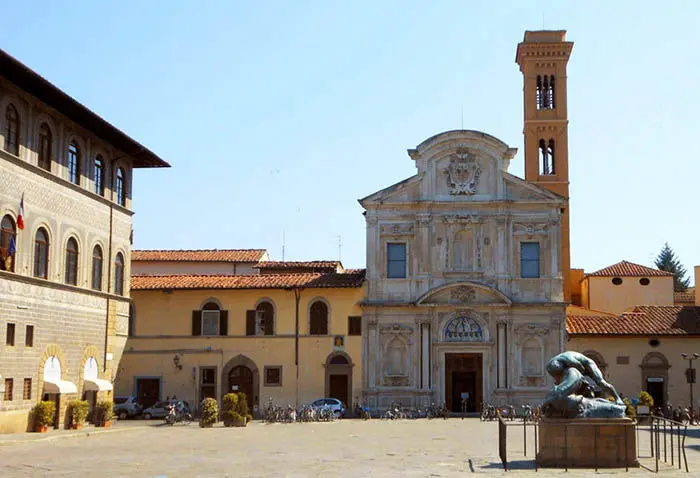
THE HOSPITAL OF INNOCENTS
Designed by Brunelleschi, this hospital is located in the Plaza de Santa Annunziata. After his passing, other artists got to work on finishing the facade.
The building was part of a program to improve the health and social security of the city.
The hospital became an orphanage which would care for abandoned children. Outside, there is a wheel where mothers would leave their offspring for collection. They would ring a bell to grab the attention of the nuns and quickly ran away before being seen. In 1490, medallions in the shape of diaper wearing babies were placed on the columns of the building so that people could easily identify the site.
Many children were welcomed here until 1878 when the hospital finally closed.
Let's go to the Piazza della Liberta to listen to the last audio of the audioguide (audioguides).
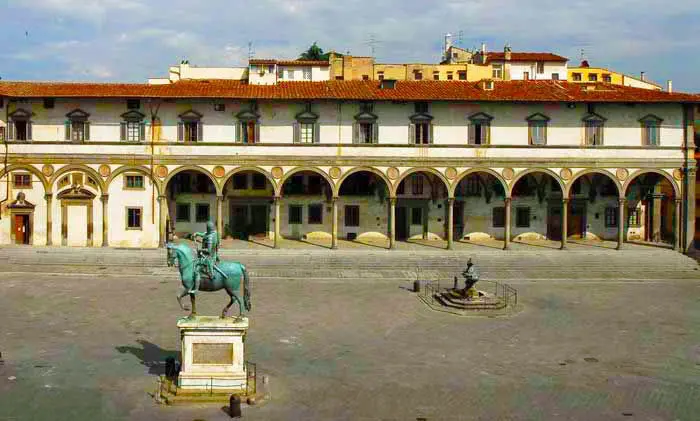
PIAZZA DELLA LIBERTÁ
This plaza was built in the 19th century when the old walls were knocked down. In the center is the Triumphal Arch of Francesco Stefano di Lorraine, which commemorates the arrival of the Grand Duke of Tuscany in 1739.
During the Middle Ages, the area was known as San Gallo. Within it were a small Franciscan church and a hospital.
Lorenzo de Medici commissioned Giuliano Giamberti to renovate the buildings that were beginning to collapse. From that moment on he was known as Giuliano da San Gallo.
From that period, only the Porta San Gallo has been conserved, which was erected in 1285 and is guarded by two stone lions. Getting closer with the audioguide (audioguides), we can read the two plaques of the structure, one in honor of Rolandino de Canossa and the other of King Frederick IV of Denmark.
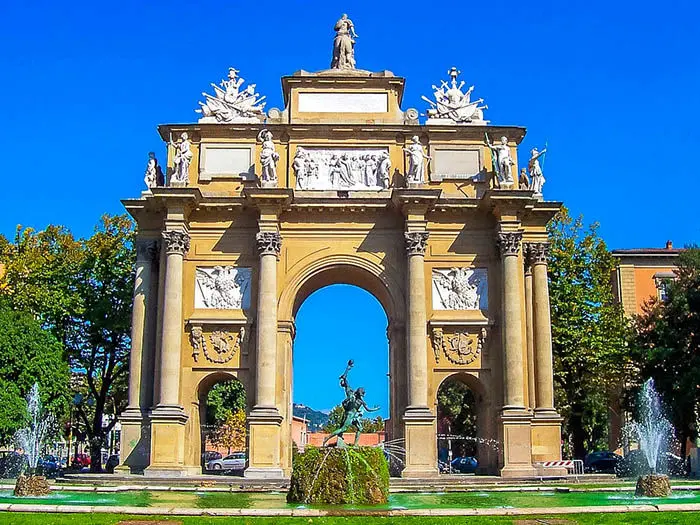
Audio guide devices, Multimedia audio guides,
Audio guide GPS tourist bus-train, charging bases and accessories.
Group guidance systems, headsets, charging cases, tour guide systems accessories.
Audioguides available from mobile devices, web App, downloadable App from Google Store.
Audioguides in several languages, translations, voiceovers. Audio descriptions, signoguides, visual contents for audioguides. 3D Reality.